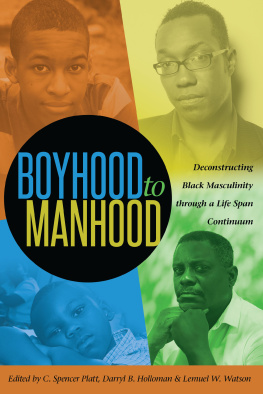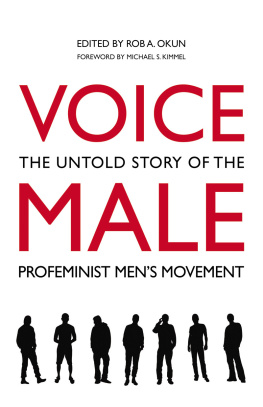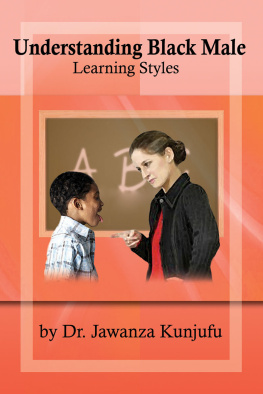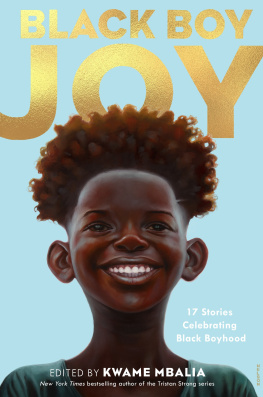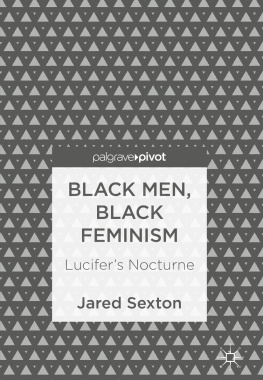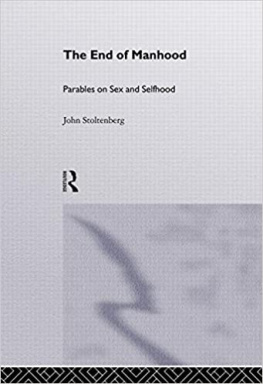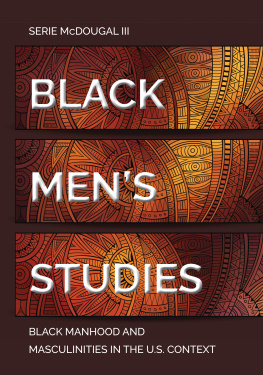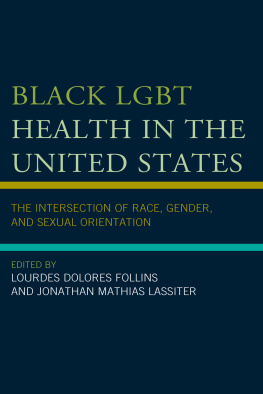
Rochelle Brock and Richard Greggory Johnson III
Executive Editors
Vol. 65
The Black Studies and Critical Thinking seriesis part of the Peter Lang Education list.
Every volume is peer reviewed and meetsthe highest quality standards for content and production.

PETER LANG
New York Bern Frankfurt Berlin
Brussels Vienna Oxford Warsaw
Boyhood to Manhood
Deconstructing Black Masculinity
through a Life Span Continuum
Edited by C. Spencer Platt,
Darryl B. Holloman,
& Lemuel W. Watson

PETER LANG
New York Bern Frankfurt Berlin
Brussels Vienna Oxford Warsaw
About the author
C. Spencer Platt is Assistant Professor at the University of South Carolina. He received his Ph.D. in higher education administration from the University of Texas at Austin.
Darryl B. Holloman is Assistant Vice President for Student Affairs and Dean of Students at Georgia State University and has worked in student and academic affairs for over twenty years. His research examines the progression and persistence of underrepresented populations on college campuses.
Lemuel W. Watson is Dean of the College of Education at the University of South Carolina and Professor in the Department of Educational Leadership and Policies and Executive Director for the South Carolina Center for Educational Partnerships.
About the book
Boyhood to Manhood: Deconstructing Black Masculinity through a Life Span Continuum seeks to foster an open and honest discussion about the intersection of multiple identities found among Black males. The book explores topics such as what it means to be a Black male; race and ethnicity; health; [dis]ability; athletics; socioeconomic status; historical accounts; employment; religion and sexual identity. Many Black men share the experience of being members of cultures that are guided by strict gendered norms. These norms often require men to conform to masculine behaviors, which may increase their levels of risktaking behavior, anxiety and fear of being ostracized should they fail to display the appropriate male skill sets. The ability to explore and embrace other possibilities for the ways that men can construct their personal and professional realities helps to enhance and broaden the ways in which men live their lives and seek opportunities. The qualitative, quantitative and historical data presented in this book provide new understandings of the experiences, roles and perspectives of Black men.
This eBook can be cited
This edition of the eBook can be cited. To enable this we have marked the start and end of a page. In cases where a word straddles a page break, the marker is placed inside the word at exactly the same position as in the physical book. This means that occasionally a word might be bifurcated by this marker.
Library of Congress Cataloging-in-Publication Data
From boyhood to manhood: deconstructing Black masculinity through a life
span continuum / edited by C. Spencer Platt, Darryl B. Holloman, Lemuel W. Watson.
pages cm. (Black studies and critical thinking; v. 65)
Includes bibliographical references.
1. African American menEducation (Higher) 2. African American men Social conditions. 3. African American menRace identity. 4. Masculinity. 5. African American male college students. 6. Academic achievementUnited States.
I. Platt, C. Spencer.
LC2781.F75 378.1982996073dc23 2014038331
ISBN 978-1-4331-2560-7 (hardcover)
ISBN 978-1-4331-2559-1 (paperback)
ISBN 978-1-4539-1445-8 (e-book)
ISSN 1947-5985
Bibliographic information published by Die Deutsche Nationalbibliothek.
Die Deutsche Nationalbibliothek lists this publication in the Deutsche Nationalbibliografie; detailed bibliographic data are available on the Internet at http://dnb.d-nb.de/.
2015 Peter Lang Publishing, Inc., New York
29 Broadway, 18th floor, New York, NY 10006
www.peterlang.com
All rights reserved.
Reprint or reproduction, even partially, in all forms such as microfilm, xerography, microfiche, microcard, and offset strictly prohibited.
Table of Contents
vii | viii
viii | ix
Scholars, researchers, and policymakers continue to inform our communities that children of color, particularly Black males, lag behind every other demographic in academic achievement and success. The current representationor even construction, if you will allowof Black males in popular culture and social media often conflicts with the prevailing notions that have traditionally surrounded the ideology of masculine power and identity, particularly as that identity is juxtaposed against the idea of White male masculinity.
The heavily policed and illuminated image of the black male is the object of adolescent intrigue, public sphere fascination, and global product placement and consumption via commodification. Many scholars and policymakers continue to limit the analyses of black masculinity to detached statistical data and reports devoid of the authentic (re) presentations of the voice and performance of black masculinities across multiple spheres. Dr. Spencer Platt, Dr. Darryl B. Holloman, and Dr. Lemuel W. Watson, however, as editors of this volume, From Boyhood to Manhood: Deconstructing Black Masculinity through a Life Span Continuum, bring together a fantastic team of authors and researchers who move from the realm of objectifying the black male and reifying false deficit statistical constructions to investigating and interrogating the multi-dimensional complexities of being a black man in America. I am quite impressed with this volume and applaud the authors for utilizing qualitative, mixed methods, quantitative, case studies and various ix | x sampling methodologies and theoretical frameworks as tools to deconstruct black masculinity through the life span of todays black male.
Given the power of social media, the global community is witness to a wide variety of mediated imagery. However, the representation of the Black male is almost exclusively the duffle bag boydrug runner, money carrier, thug. He is depicted as an aggressive, no-holds-barred bad boy, often a lifelong convict, always in and out of jail. The basis for this myopic representationparticularly in a perceived post-racial Americais rooted within the misconstrued maleness and power associated with crime. Particularly, as the criminal lifestyle has been glorified for Black males through music, language, fashion, and behavioral norms. The underlying messages in these images of Black masculinity are ones of heteronormativity, homophobia, and patriarchy. This volume deconstructs this popularized caricature of Black masculinity and offers insight into the varied and nuanced performances and experiences of Black masculinity. I believe Black males across the globe are one of the most powerful creations ever known to humanity and this volume serves as a testament to this belief. This volume interrogates the intersections of race, class, and gender with regard to Black masculinity and it moves the discourse across multiple epistemological landscapes.
As I reflect on the title, From Boyhood to Manhood: Deconstructing Black Masculinity Through a Life Span Continuum, I am reminded of a very important fact in our culture. The stigmatization of Black males has been embraced not only by America at large, but most sadly by the African American community as well. The dominant culture continues to perpetuate negative imagery of African American males through mass media, much of which is performed, produced, and written by Black men and women. Most notably, this negative construction of Black masculinity is promoted by hip-hop artists, often supported by a multibillion-dollar music conglomerate. This persistent imagery further perpetuates the ongoing demise of the African American male. We know cultural norms are learned through experience of and exposure to modeled values and behaviors. The construction of values and culture, and of Black masculinity, are communicated to our youth through this pervasive imagery and we can see those behaviors and beliefs being adopted by the next generation. These patterns become inscribed adaptive culture mechanismsthey become their truth, their swag, and their being.
Next page
